
Jamiroquai are an English acid jazz and funk band from London. Formed in 1992, they are fronted by vocalist Jay Kay, and were prominent in the London-based funk and acid jazz movement of the 1990s. They built on their acid jazz sound in their early releases and later drew from rock, disco, electronic and Latin music genres. Lyrically, the group has addressed social and environmental justice. Kay has remained as the only original member through several line-up changes.
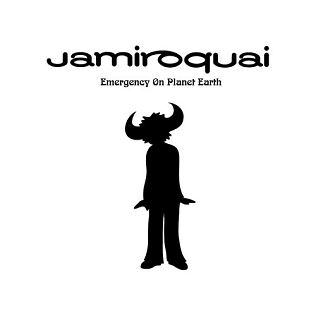
Emergency on Planet Earth is the debut studio album by English funk and acid jazz band Jamiroquai, released on 14 June 1993 under Sony Soho Square. Prior its release, the band debuted in 1992 with "When You Gonna Learn" under Acid Jazz Records, and front-man Jay Kay was given a major-label deal with Sony Music. The album was produced as Toby, Stuart and Kay formed the band and is characterised by its acid jazz foundations, layers of instrumentation and socially charged lyrics.

The Return of the Space Cowboy is the second album by English funk and acid jazz band Jamiroquai. The album was released on 17 October 1994 under Sony Soho Square. The album continues the musical direction of their debut, Emergency on Planet Earth (1993), and is characterised by its complex songwriting as a result of Jay Kay's creative block mid-production. Its lyrics addressed street life, hope, loss, Kay's drug use, and social matters regarding Native Americans and youth protests.

Travelling Without Moving is the third studio album by English funk and acid jazz band Jamiroquai, released on 28 August 1996 in Japan, then on 9 September 1996 in the United Kingdom under Sony Soho Square. Front-man Jay Kay intended for the album to have a more universal style, revolving around "cars, life and love". Critics have generally praised the album for being more focused and refined than the band's previous work, while others panned its lyrics and found the album too derivative. Its visual concept of sports cars received backlash from press, as it contradicted Kay's professed environmental beliefs.
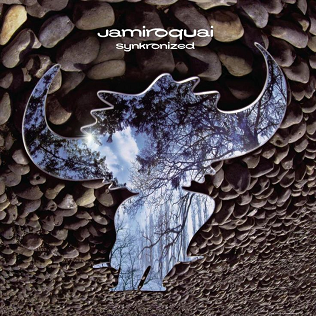
Synkronized is the fourth studio album by English funk and acid jazz band Jamiroquai. It was released on 8 June 1999 by Work Group in the United States, and on 14 June 1999 by S2 Records in the United Kingdom. Bassist Stuart Zender left the band during recording, and Nick Fyffe was hired as a replacement. The album contains funk, acid jazz and disco elements.

"Dancing in the Moonlight" is a song written by Sherman Kelly, originally recorded in 1970 by Kelly's band Boffalongo, and then a hit single by King Harvest in 1972, reaching number 5 in Canada and number 13 on the Billboard Hot 100. In 2000, a cover by English band Toploader became a worldwide hit and achieved multi-platinum status in the United Kingdom. A version by Swedish EDM duo Jubël, released in 2018, was a hit in Europe.

Dynamite is the sixth studio album by English funk and acid jazz band Jamiroquai. It was released on 15 June 2005 in Japan, 20 June 2005 in the United Kingdom, 21 July 2005 in Australia and 20 September 2005 in the United States.

"Deeper Underground" is a single by British funk and acid jazz band Jamiroquai, originally from the 1997 B-Side of the single High Times, then on the soundtrack to the 1998 film Godzilla. The song was also included as a bonus track on the group's fourth studio album, Synkronized, as well as on the special edition of the group's fifth album, A Funk Odyssey (2001).

"Virtual Insanity" is a song by British funk and acid jazz band Jamiroquai, released on 19 August 1996 by Sony Soho Square as the second single from their third studio album, Travelling Without Moving (1996). The song was written by Jay Kay and Toby Smith, and produced by Al Stone. Its music video, directed by Jonathan Glazer, was released in September 1996, garnering ten nominations and winning four, including for Video of the Year, at the 1997 MTV Video Music Awards. The music video has since become an Internet meme.
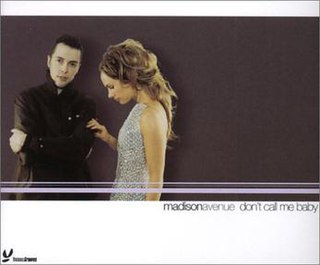
"Don't Call Me Baby" is a song by Australian house music duo Madison Avenue, released as the first single from their only studio album, The Polyester Embassy (2000). Written by Cheyne Coates, Andy Van Dorsselaer, Duane Morrison, and Giuseppe Chierchia, the song includes a bassline sample from "Ma Quale Idea" by Italo disco artist Pino D'Angiò, which in turn is based on "Ain't No Stoppin' Us Now" by McFadden & Whitehead.

"Cosmic Girl" is the second single from British funk and acid jazz band Jamiroquai's third studio album, Travelling Without Moving (1996). The song was released in the United Kingdom on 25 November 1996 via Sony Soho Square and in the United States in 1997 via Work Group. It was written by Jay Kay and Derrick McKenzie, and produced by Rick Pope, achieving great chart success, peaking at No. 6 on the UK Singles Chart. The song also reached No. 3 in Italy, No. 4 in Iceland, and No. 10 in Finland. The accompanying music video was directed by Adrian Moat and filmed in Spain. The B-side to the single is an instrumental, "Slipin' 'N' Slidin'", a song originating from another Jamiroquai track called "Mr Boogie", which was a live-only song. "Slipin 'N' Slidin'", just like "Mr Boogie", also has a vocal version.

"Black Capricorn Day" is the fourth single released by British funk and acid jazz band Jamiroquai from their fourth studio album, Synkronized. The single was released in November 1999 in Japan only, peaking at number 14 on the Japan Hot 100. Despite the single never being available in the UK, the music video was included on the British version of the High Times: Singles 1992–2006 DVD.
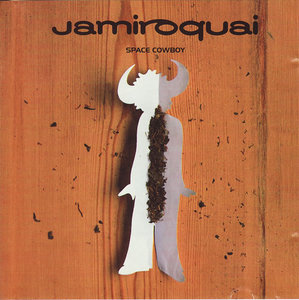
"Space Cowboy" is the international lead single from British funk and acid jazz band Jamiroquai's second studio album, The Return of the Space Cowboy (1994). Released on 26 September 1994 by Sony Soho Square, the single peaked at number 17 on the UK Singles Chart, number six in Italy, and number three in Iceland. In the United States, it gave the band their first number one on the Billboard Hot Dance Club Play chart. In June 2006, it re-entered the UK Dance Chart at number one. Its music video was directed by Vaughan Arnell and Anthea Benton. The single contains remixes by David Morales, which further put the single in club circulation.

"Little L" is the lead single from British funk and acid jazz band Jamiroquai's fifth studio album, A Funk Odyssey (2001). The song was written by Jay Kay and Toby Smith and was inspired by the break-up between Kay and his former girlfriend Denise van Outen, which occurred due to conflicting work commitments and which led to Kay's cocaine problem. Kay quit his habit in 2003.

"King for a Day" is the fourth single from British funk and acid jazz band Jamiroquai's fourth studio album, Synkronized (1999). The song was written by Jay Kay. Upon its release on 29 November 1999, the song reached number 20 on the UK Singles Chart. The video features Jay Kay walking around an old mansion in a regal costume, where each room has a member of the band.

"Love Foolosophy" is the third single from British funk and acid jazz band Jamiroquai's fifth studio album, A Funk Odyssey (2001). The song was written by Jason Kay and Toby Smith. The song's title is a play on words, using a made-up portmanteau of "fool" and "philosophy" to express how he is a fool for love.
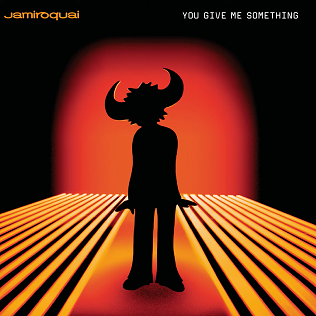
"You Give Me Something" is a song from British funk and acid jazz band Jamiroquai's fifth studio album, A Funk Odyssey (2001). Written by Jay Kay, Rob Harris, and Nick Fyffe, the song was released in November 2001 as the second single from the album. The track peaked at 16 on the UK Singles Chart, number 17 in Spain, and number 30 in France. The song was the group's first single to be released on the DVD single format.

"Light Years" is a song by the British funk and acid jazz band Jamiroquai, originally released in 1994 as a song from their second studio album, The Return of the Space Cowboy (1994). It was released as a single on 12 February 1995 by Sony Soho Square and Work, but failed to chart on the UK Singles Chart due to the release being cancelled at the eleventh hour.

"Supersonic" is the third single from British funk/acid jazz band Jamiroquai's fourth studio album, Synkronized (1999). The song was written by Jay Kay, Toby Smith, Derrick McKenzie, Sola Akingbola, Wallis Buchanan, and Simon Katz while Jay Kay and Al Stone produced it. The track peaked at No. 22 on the UK Singles Chart and became Jamiroquai's third No. 1 on the US Hot Dance Club Play chart.

"What's Your Sign" is a song by British pop and soul singer Des'ree. Written by the singer with the track's producer Ashley Ingram, "What's Your Sign?" was released as the fourth single from Des'ree's third studio album, Supernatural (1998). It was released on 26 October 1998 and reached number one in Spain as well as the top 40 in Austria and France.




















